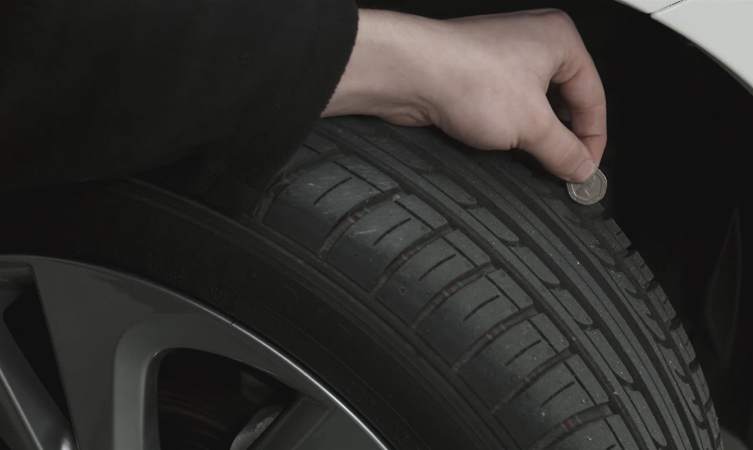Making sure your Toyota’s tyres have enough tread left is a legal requirement for good reason – if the tyres are excessively worn then safety is compromised, especially in the wet.
The tyres’ tread does a very important job on wet roads, channelling away water so the tyres can get a grip on the Tarmac beneath. Cornering performance and braking all suffer if the tread is worn too low, and the risk of aquaplaning dramatically increases.
To stay the right side of the law means a minimum of 1.6mm of tread in a continuous band across the central three-quarters of the tyre width around the entire circumference of the tyre.
Let the tyres wear down to that level and the stopping distance in the wet increases – and it’s not a small difference. A medium-sized hatchback will need 34 metres to stop from 52mph in the wet*. That’s a huge 10 metres further than the same car on brand new tyres with 8mm of tread. To put it another way, that’s more than two car lengths.
It pays to change your Toyota’s tyres well before they wear down that low. Even tyres which are still legal have significantly longer stopping distances in wet weather than brand new rubber with a full 8mm of tread. Once the tread has worn down to 3mm the stopping distance will have increased by nearly three metres.
We’d recommend changing the tyre once the tread has worn as low as 3mm. This gives some leeway before the tyre is illegal and the stopping distance increases dramatically.
As well as keeping an eye on the tread depth, there are other things to watch out for to keep your Toyota’s tyres legal and safe.
The tyres must be inflated correctly for the purpose in which your car is being used. That can mean increasing the tyre pressures when driving with a heavily loaded car or when towing, for example. Tyres must not have a cut in excess of 25mm or 10% of the tyre section width, whichever is the greater, which is deep enough to reach the tyre’s internal structure. The tyres must not have a lump, bulge or tear caused by separation or partial failure of its structure, and must not have any ply or cord exposed.
The penalty for driving with tyres which don’t have the correct tread depth or are damaged could be severe. You can be fined up to a maximum of £2,500 and given a driving licence endorsement of three penalty points for driving with illegal tyres.
It’s also important to drive with the right tyres for the time of year. That means switching to winter tyres for the coldest months. Winter tyres are safer once temperatures drop to 7˚C, not just when there’s snow and ice on the ground. Our dealers can store your summer tyres for you until the time comes to switch back, and look after your winter tyres in the summer.
If your tyres do need replacing, contact your local Toyota dealer. You can expect a friendly, efficient and expert service, as well as competitive pricing.
Let us help you stay safe and stay legal.
*All testing carried out with a medium sized, 2.0 TDi, front wheel drive hatchback running 195/65 R15 tyres at 2.2 bar (cold). Testing was carried out on a Hot Rolled Asphalt surface with an average of 0.8mm water depth.
See also:
Winter tyres: stay safe, stay mobile




